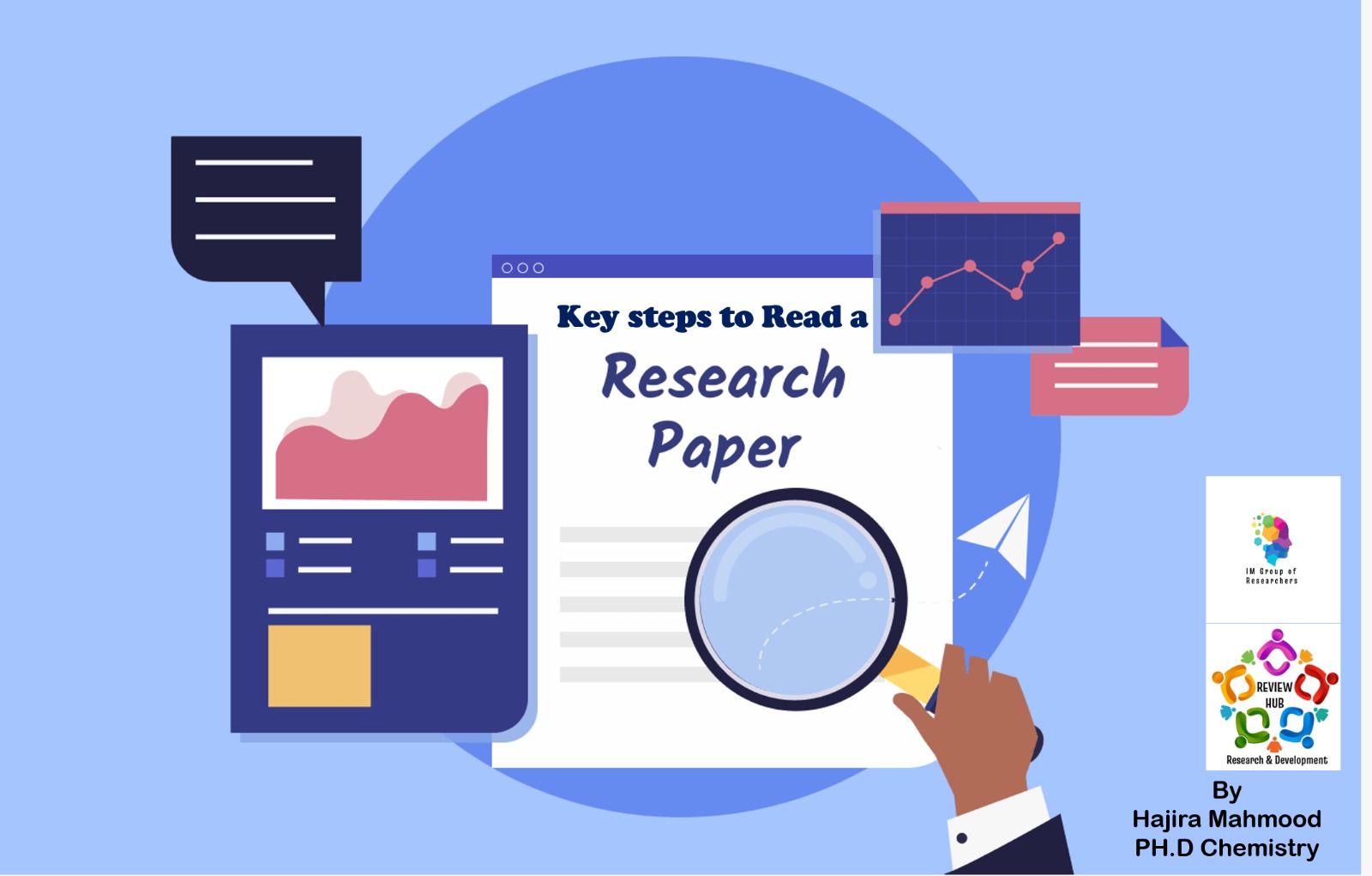9 Key Steps to Read a Research Paper
This article provides 9 Key Steps to Read a Research Paper, so you can save your time and energy and keep a better pace during your research time period. Happy Reading.
Author: Hajira Mahmood
LinkedIn: Click here to see Hajira’s profile
1- Check relevance
Make sure a document is relevant before delving deeply into it by quickly reading the abstract, introduction, and conclusion. You don’t want to work for two or three hours and get nothing in return.
2- Write synopsis
If the article piqued your interest, summarize it in no more than three specific bullet points.
- The writers’ actions
- Their method
- Their discoveries.
It will help you form a mental image of the paper’s larger scope. You can quickly go around the paper if you know what it’s about.
3- Identify the purpose
Make sure you understand the goal. You’ll save time and be able to concentrate on the relevant portion.
- What drew you to peruse this document?
- Do you wish to comprehend the approach used in the research?
- Have you read this paper in quest of a fresh research idea?
4- Read critically
Examine the work with a critical eye. This implies that after reading the document, you ought to be able to respond to the question, “What are the positive and negative characteristics of this paper?” This is crucial in order to enable you to evaluate the caliber of a research paper.
5. Write key takeaways
Write down your thoughts on the following issues as you read the paper or after you’ve finished:
- What are the main lessons I learned from this paper?
- How can I apply these lessons learned?
- What can be added to the current work?
- Is there anything that might be better?
Writing lengthy narratives is not required. You have five to ten minutes to type all of this. Information that is not documented disappears.
6. Skim through the references
Once the main body has been completed, review the references. There might also be some extremely significant works there. If this is the case, you can read more depending on how much time you have.
7. Key takeaways from the presentation
Examine the paper’s method of communication, diagrams, graphs, and tables of contents. Consider whether such diagrams, graphs, etc. would be appropriate for your paper. In your takeaways, make a note if the response is affirmative.
8. Take note of model papers
You may find that certain papers you read have a lot to do with the next piece of writing you are interested in writing. While drafting your subsequent paper, make a note of two or three of these papers and keep them right in the forefront of you. It will function as a guide for references when composing your paper.
9. Read wherever.
You may find that certain articles you review have a lot to do with the next piece of writing you want to write. Whenever drafting your next paper, make a note of two or three of these papers and keep them in front of you. It will function as a guide for references when composing your paper.
Also read: Tips & Art for Effective paraphrasing
Follow Us on

